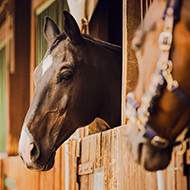Stone-curlew conservation project celebrates 40 years
The project saw stone-curlew numbers increase from 150 breeding pairs in 1985 to 350 pairs today.
The Royal Society for the Protection of Birds (RSPB) is marking 40 years of a project to protect numbers of stone-curlews in England.
The conservation charity launched the scheme in 1985, amid dwindling numbers and a limited range for the the bird.
In 1985, RSPB estimated that there were only 150 breeding pairs remaining of the stone curlew. The charity says this is due to the disappearance of possible nesting sites, such as downland and heathland.
Without these sites, stone-curlews had been forced to relocate to arable fields, facing increasing threat from farming machinery. The use of pesticides has also meant there has been fewer insects for birds and their chicks to eat.
In response to the threat, RSPB introduced two projects: the RSPB Wessex Stone-curlew Project and the RSPB Eastern England Stone-curlew Project.
Conservation teams, funded by the government, worked with landowners, farmers and gamekeepers to find a way to protect stone-curlew nests. Through this collaboration, special nesting sites were secured that keep stone-curlews and their chicks away from disturbance.
There are now 207 farms across Wessex and eastern England involved in the scheme, providing 305 monitored nesting sites.
As a result of the scheme, stone-curlew numbers in Wessex have increased from 30 breeding pairs in 1985 to 120 confirmed breeding pairs now. In 2024, 70 per cent of breeding attempts took place on specially-created nesting sites and 90 per cent of young fledged came from the nesting sites.
In eastern England, stone-curlew numbers went from less than 100 breeding pairs to approximately 226 breeding pairs in 2024.
Stone-curlew’s low breeding rate means that the population grows slowly and is vulnerable to change. Nonetheless, it is now estimated that there are 350 breeding pairs across the UK, compared to just 150 in 1985.
Tim Cowan, RSPB conservation officer, said: “The willingness of farmers and landowners to work with the projects and our dedicated volunteers by creating and protecting stone-curlew breeding sites over the past four decades, has been remarkable. Simply put, this work couldn’t have been done without them and our fellow partner organisations.
“The success of the stone-curlew projects is proof that by working together we can make space for nature if we really want to. We look forward to continued work towards establishing a sustainable population of stone-curlew.”
Image © Shutterstock



 Zoetis has launched a new survey to identify management techniques for Equine Herpes Virus (EHV).
Zoetis has launched a new survey to identify management techniques for Equine Herpes Virus (EHV).